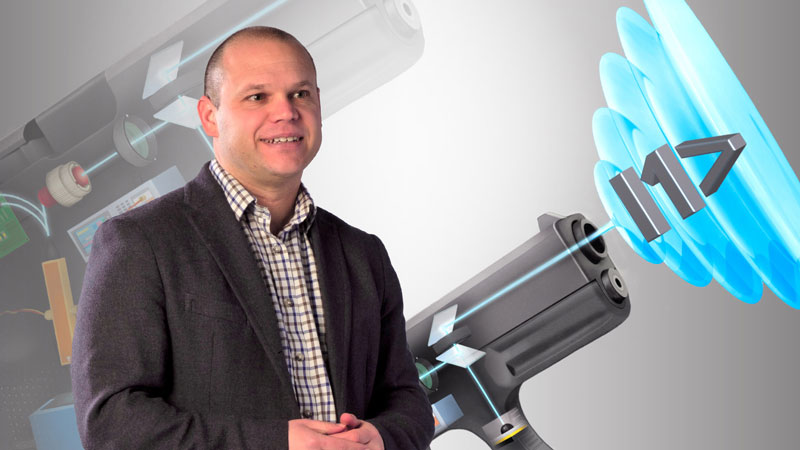Creating radical quantum

Quantum technologies are primed to revolutionise the fields of communication, information processing and metrology in the coming years
The Quantum Photonics Lab is at the forefront of a ‘quantum revolution', developing quantum light sources for future technologies that exploit the bizarre properties of quantum mechanics.
Many of the technologies we use today – from computers to household appliances, GPS, atomic clocks and lasers – take advantage of quantum physics. Just as classical physics pulled civilisation from the pre-industrial age into the Industrial Revolution in the 18th and 19th centuries, quantum mechanics spurred the Information Age, completely transforming the way we work, interact and communicate.
In spite of this incredible shift in recent years, quantum mechanics has even more to offer. Today's leading technologies are not taking full advantage of quantum mechanics' most remarkable properties – superposition and entanglement – but a second ‘quantum revolution' will. Indeed, quantum optics – the study of phenomena involving light, or photons, and their interactions with matter at submicroscopic levels – has been central to this revolution, and has led to the development of new technologies that exploit what Professor Brian Gerardot terms “the bizarre behaviour of quantum particles”.
Professor Gerardot has been awarded a prestigious five-year fellowship through the Royal Society Wolfson Research Merit Award to drive forward his work at the Quantum Photonics Lab at Heriot-Watt. Motivated by a desire to surmount technological challenges and, of course, curiosity, the Lab is working at the interface of quantum optics, condensed-matter physics, materials science and nano-optics, and its ultimate aim is to create the ideal quantum photonic device.
“Quantum technologies are primed to revolutionise the fields of communication, information processing and metrology in the coming years,” he explains. “Similar to contemporary technologies, future quantum machinery will likely consist of a semiconductor platform capable of creating and processing quantum information.” With this in mind, the Lab is seeking to engineer quantum states in semiconductors, thereby developing the necessary quantum machinery for the creation of radical technologies.
Real-world impact
With state-of-the-art facilities at their disposal, Professor Gerardot and his team are designing and fabricating pristine, atomically thin devices that can be incorporated onto chips. Over the years, the Lab has been able to create single photon sources in ‘bulk' semiconductors. And, more recently, the team has been developing on-demand, single photon sources in atomically thin layers of semiconductors. Incredibly, these samples are simply a single sheet of atoms, peeled or ripped off from a larger crystal by sticky tape.
Graphene – which is 200 times stronger than steel and one million times thinner than a human hair – is one example of a single layer of carbon atoms arranged in a hexagonal lattice. There are, however, hundreds of different crystals that can be manipulated to create heterostructures with specific electronic and optical properties.
“We can create semiconductor devices that, with the push of a button, generate a single photon, or quantum state of light, on-demand,” states Professor Gerardot. “Further, these photons are identical to each other, an important resource for future quantum technologies.” At present, the Quantum Photonics Lab is working on scalability – moving from one on-chip single photon source to many sources – and coupling, which involves entangling photons and coherent electronic spin-states. This research is significant, spearheading the development of novel hardware for the communications, metrology and computing technologies of the future.
Key information
Brian Gerardot
- Professor
- b.d.gerardot@hw.ac.uk